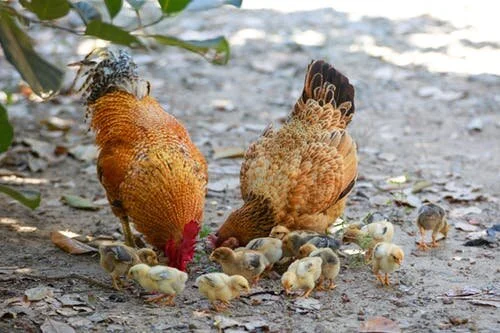Guide to Rearing Chicks
Rearing in a brooder
If you're buying day old chicks and are transporting them home, you will need a small box so the chicks are huddled together with plenty of insulation in the bottom - scrunched up kitchen roll or hay are good. Place the chicks in a pre-heated brooder as soon as you get them home. If you're hatching chicks in an incubator, don't be tempted to open the incubator more than necessary as this will affect the temperature and humidity for any chicks that are still hatching. Leave the chicks in the incubator until they are dry and fluffy.
The Brooder
The most important part of the brooder is the heat source. Newly hatched chicks need to be kept at 35 degrees at first and this is reduced slowly over approximately six weeks. Keeping chicks at the correct temperature is the most important aspect of rearing chicks successfully. If chicks are too hot or cold they will cheep loudly. Check how they are behaving. If they are too hot, they will move away from the heat source and be spread out around the brooder. When it's too cold, they will be huddled together under the heat source.
A heat lamp or electric hen can be used. Heat lamps should be hung out of reach of the chicks but not too high from the ground. Test the temperature below the brooder at ground level where the chicks will be. It should be about 35 degrees.
Food for chicks and growers
Nobleton Feed Mills range of feed is ideal for newly hatched chicks. Use xxxxxxx, a top quality chick feed, for the first few weeks and then change to xxxxx at about 3 weeks of age. xxxxxxx could be introduced at this age as an alternative.
By the third week, the chicks food consumption will increase substantially so make sure you have plenty of food for them.
Food should be available at all times to make sure the chicks eat plenty. They will not overeat.
Chicks need chick flint grit to help with digestion. This can be put into a small container so you can see when they need more.


